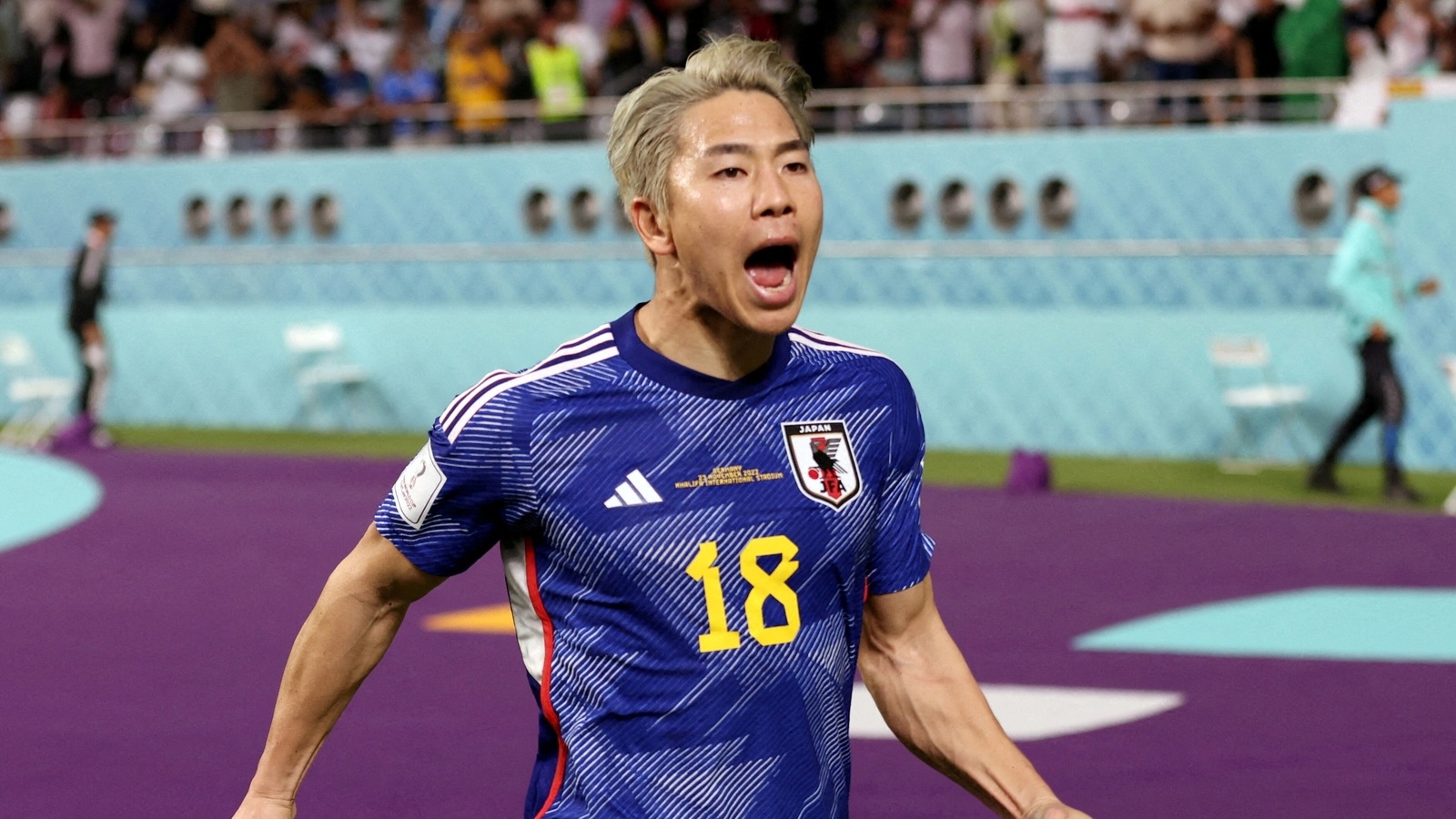Made in Japan, export quality footballers
Yoshiro Moriyama waited for the translation to understand the question and then smiled. “I could be talking about it for the next two days,” the Japan under-17 coach had said when asked about the country’s youth development programme ahead of the 2017 under-17 World Cup round-of-16 game against England. Japan lost on penalties but from there Takefusa Kubo has made it to the 2022 World Cup squad.
One that began its campaign with a stunning win against Germany and will play Costa Rica on Sunday knowing that a win can seal a round-of-16 berth from a group that has two world champions.
Also Read | Lewandowski scores in 2-0 win as Saudi Arabia pay the penalty
Moriyama is still the country’s under-17 coach, said Satomi Tanekura. In a measured tone, Tanekura then summarised what Moriyama said would take much longer than a routine pre-match media interaction.
“Each club in the J-League has its own academy,” said Tanekura who is part of the Japan Football Association (JFA) media team here. “Some start youth programmes at the under-12 level and some at under-15 but it is common for clubs in J League 1 and 2 to have full-fledged teams from the under-16 level.”
The youngest national team, Tanekura said, is the under-15 and there are five more age-groups for each succeeding year till the Olympic team which is the under-21 side. The under-17 head coach is in charge of teams below his age-group but if there is an Asian age-group qualifier next year, a coach can be appointed for that team, she said.
Football’s popularity can be gauged by the consistent uptick in attendance in J-League till Covid-19, she said. “This despite many players from Japan regularly moving abroad.” According to Statista, annual attendance in J League grew from 4.83 million in 2011 to 6.35m in 2019.
Football is a comparatively new sport in Japan, said Nobuhiro Chiba of Nikkan Sports, the first Japanese sports newspaper which was founded in 1946. “But now it shares the No. 1 spot along with baseball. Among the young, football is more popular than baseball. Our football culture became bigger after the J League started in 1993,” said Chiba through text messages from Tokyo.
The J League began with 10 clubs and now has three tiers, J1, J2 and J3, with the top division comprising 18 teams, the second 22 and the third 18.
The ‘culture’ Chiba was referring to has created conditions for Japanese footballers to move to Europe. What started in 1979 with midfielder Yashuhiko Okudera has become a torrent.
According to the website Soccerway, Japan has five players in England including Takehiro Tomiyasu at Arsenal and Kauro Mitoma, both of whom are here for the World Cup. There are 31 in Spain though only Kubo plays in La Liga, 54 in Germany with 10 in the Bundesliga including the scorers against Germany, Ritsu Doan and Takuma Asano, seven in France with three in Ligue 1 and four in Eredivisie, the top league in the Netherlands. There are Japanese footballers in Argentine, Australian, Brazilian, Bangladeshi, Belgian, Indian and Indonesian leagues among others.
Hopefully, one day Saudi Arabia too will be able send players to stronger leagues, coach Herve Renard had said before their opener against Argentina. Japan was one of the countries he mentioned.
And yet because football is “comparatively new we do not have enough experience of success at the world level. This win will be one,” said Chiba. Most of Japan didn’t think they could beat Germany, he said. “So this is a good surprise. Now we can be more proud of the Blue Samurai.”
“Wonderful” though the win against Germany was, “it won’t guarantee a win tomorrow,” said Japan head coach Hajime Moriyasu on Saturday. “Past achievement needs to be forgotten, This is no time for complacency.”
For all the latest Sports News Click Here
For the latest news and updates, follow us on Google News.


